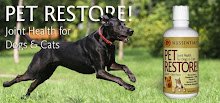We’ve begun treating HW+ dogs with the “slow kill” method instead of the “fast kill” method. The fast kill method is the painful, and expensive, injections of Immiticide. The slow kill method is done with Heartgard and the antibiotic Doxycycline.

In deciding which method to use you’ll take into account the age of the dog, his activity level and the extent of the HW infestation. So long as the dog isn’t showing symptoms of the HW or the symptoms are very minimal the slow method of treatment is great way to go.
The info below is taken from this site:
http://www.dogaware.com/wdjheartwormtreatment.html
It is important to understand that heartworm infections are not detectable until about six months after a dog has been bitten by a heartworm-infected mosquito. (This is why it's not possible to have a heartworm test performed monthly and give the preventative only if an infection is found.) Blood tests generally will not detect heartworms in a dog until the larvae have matured into adult worms, which takes about six months following initial infection. Symptoms, such as coughing, lethargy and difficulty breathing, will not show up until the infection is advanced.
The info below is taken from this site:
http://www.dogaware.com:80/heartworm.html
Recent research has led to the discovery of a parasite called Wolbachia that lives symbiotically inside heartworms. Studies indicate that this parasite contributes to the adverse effects of both heartworm infection and heartworm treatment, including inflammation, embolism and allergic reaction. Treatment with Doxycycline to kill the Wolbachia parasite weakens the heartworms and makes them unable to reproduce, lessens their adverse effects on the body and greatly reduces the chance of adverse reaction during heartworm treatment.
Now, new studies published in late 2008 clearly indicate that treatment with a combination of weekly Ivermectin and daily Doxycycline given intermittently will sterilize the heartworms, prevent the dog from being infective to other dogs, speed up the death of the worms prior to (or in place of) Immiticide treatment, limit inflammation and damage caused by the worms presence, and reduce the chance of serious adverse reaction from Immiticide treatment. All of these effects are greater when the two drugs are used together than when either is given alone.

Three studies used a protocol of Ivermectin (Heartgard) given weekly at the normal monthly heartworm preventative dose (6 mcg/kg), combined with Doxycycline at the rate of 10 mg/kg/day for weeks 1-6, 10-11, 16-17, 22-25, and 28-33 (the end of the studies).
Here’s what we’ve been doing: Start the dog on Doxycycline at 10mg/kg/day for 30 days. Then give the same dose for one week at the beginning of every month until the dog tests negative.
We’ve been giving the Heartgard twice a month, say on the 1st and 15th.
We get the Doxycycline at Walmart. Ask your vet to either write a prescription or call one in for you. It’s costs about $8 for a month’s supply.
The beauty of the slow method, aside from how inexpensive it is, is that you don’t have to keep the dog kenneled. Their activity doesn’t have to be cut back unless you start seeing symptoms. For example, if the dog starts coughing after running, cut back on his running. Regardless of which method of treatment you’re using, if you start seeing a lot of coughing or labored breathing get to the vet.
The slow kill method of treatment is much easier on the dog than the injections. The injections are extremely painful at the injection site and require a pain shot. If you’re going to use the injection method, hopefully your vet will give a pain shot a half hour before injecting the Immiticide.
On the slow kill method have the dog retested in about 6 months. After that, retest about every 3 months. You can adopt out a dog that’s on the slow kill method. Once it’s explained to the potential owner it’s very easy for them to follow this method. We’ve done it.


 Alice (above) and Gracie's brother and sister, Bonnie and Clyde, were at PetSmart as well. Both look exactly like Gracie! And both received good applications in fact Clyde is already adopted and is in his new home.
Alice (above) and Gracie's brother and sister, Bonnie and Clyde, were at PetSmart as well. Both look exactly like Gracie! And both received good applications in fact Clyde is already adopted and is in his new home.












